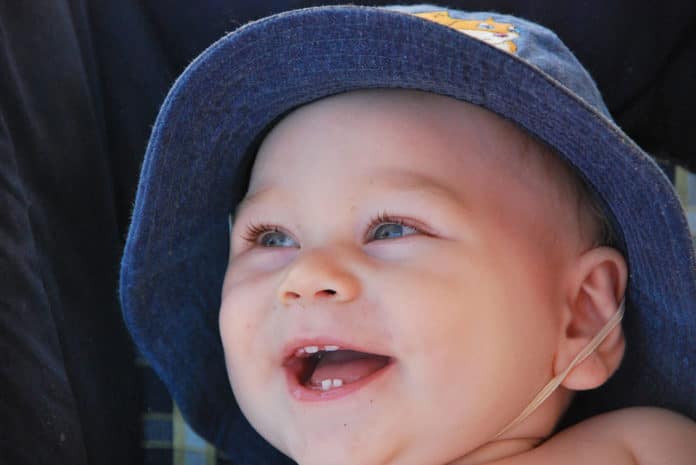Teething often starts when babies are between 6 and 12 months old. In some cases, babies are born with an already erupted tooth. A new study suggests that the thickness of growth marks in baby teeth can help identify children at risk for depression and other mental health disorders later in life.
This study by the scientists at Harvard-affiliated Massachusetts General Hospital could help scientists develop a much-needed tool for identifying children who have been exposed to early-life adversity, which is a risk factor for psychological problems.
Childhood adversity is responsible for up to one-third of all mental health disorders.
Erin C. Dunn, a social and psychiatric epidemiologist and an investigator in MGH’s Psychiatric and Neurodevelopmental Genetics Unit, was particularly interested in the timing of these adverse events and uncovering whether there are sensitive periods during child development when exposure to adversity is particularly harmful. But due to a lack of effective tools, Dunn and the team were unable to measure exposure to childhood adversity.
However, Dunn was interested in learning that anthropologists have long studied people’s teeth from past eras to learn more about their lives.
Dunn said, “Teeth create a permanent record of different kinds of life experiences. Exposure to sources of physical stress, such as poor nutrition or disease, can affect the formation of dental enamel and result in pronounced growth lines within teeth, called stress lines, which are similar to the rings in a tree that marks its age. Just as the thickness of tree growth rings can vary based on the climate surrounding the tree as it forms, tooth growth lines can also vary based on the environment and experiences a child has in utero and, shortly thereafter, the time when teeth are forming. Thicker stress lines are thought to indicate more stressful life conditions.”
In her hypothesis, Dunn theorized that the width of one variety, in particular, called the neonatal line (NNL), could indicate whether an infant’s mother experienced high levels of psychological stress during pregnancy and in the early period following birth.
Scientists analyzed 70 primary teeth collected from 70 children enrolled in the Avon Longitudinal Study of Parents and Children (ALSPAC) in the United Kingdom to test the hypothesis. In ALSPAC, parents donated primary teeth that naturally fell out of the mouths of children aged 5 to 7.
Mothers completed questionnaires during and shortly after pregnancy. The questionnaires included questions about four factors that are known to affect child development:
- Stressful events in the prenatal period.
- Maternal history of psychological problems.
- Neighborhood quality (whether the poverty level was high or it was unsafe, for instance).
- Level of social support.
Several clear patterns emerged. Children whose mothers had lifetime histories of severe depression or other psychiatric problems and mothers who experienced depression or anxiety at 32 weeks of pregnancy were more likely than other kids to have thicker NNLs.
Mothers who received essential social support shortly after pregnancy tended to have thinner NNLs. This trend remained the same after scientists tried to control other factors that influence NNLs width, including iron supplementation during pregnancy, gestational age (the time between conception and birth), and maternal obesity.
Dunn said, “No one is certain what causes the NNL to form, but a mother experiencing anxiety or depression may produce more cortisol, the ‘stress hormone,’ which interferes with the cells that create enamel. Systemic inflammation is another candidate.”
“If the findings of this research can be replicated in a larger study, the NNL and other tooth growth marks could be used in the future to identify children who have been exposed to early life adversity.”
“Then we can connect those kids to interventions, so we can prevent the onset of mental health disorders, and do that as early on in the lifespan as we possibly can.”
Journal Reference:
- Rebecca V. Mountain et al. Association of Maternal Stress and Social Support During Pregnancy With Growth Marks in Children’s Primary Tooth Enamel. DOI: 10.1001/jamanetworkopen.2021.29129
